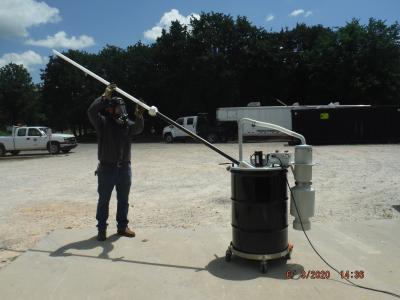Fluorescent Bulb Recycling
The Midwest City Household Hazardous Waste Facility accepts all fluorescent bulbs and tubes for recycling. Lowe's and Home Depot stores may also take compact fluorescent lamps (CFL).
Fluorescent lamps, including CFLs, contain trace amounts of vaporized Mercury, a heavy metal and known neurotoxin. The Mercury, or Hg, content of CFLs is typically in the range of .4 mg. To provide some comparison, a typical, industry-standard T-12 commercial fluorescent lamp contains in the neighborhood of 20mg of vaporized Mercury. Older glass thermometers for home use typically contain 500 mg of liquid Mercury.
While in operation, and as long as the bulb is intact, CFLs do not release Mercury, and their use actually leads to an overall decrease in Mercury in the environment through reductions in electricity generated by the combustion of coal. CFLs use 75% less energy than incandescent bulbs, resulting in average savings per bulb of $35. The US Environmental Protection Agency (EPA) also estimates that if every American changed at least five incandescent bulbs to CFLs, greenhouse gases emissions equivalent to nearly 10 million cars would be avoided.
The hazardous waste facility uses a piece of equipment called a Bulb Eater, which pulverizes the glass into a fine sand, which is stored inside of a 55 gallon drum, while simultaneously capturing the trace amounts of vaporized mercury in specialized filters, which can then be properly disposed of. This is a safe and efficient way to reduce large fluorescent tubes into a much smaller area for recycling and disposal.
To make your appointment to drop off old fluorescent bulbs and tubes, please call the Household Hazardous Waste Facility at: (405) 739-1049
How to Clean Up a Broken or Damaged Compact Fluorescent Lamp
Please refer to the EPA's guide to cleaning up Broken CFL's by visiting the Environmental Protection Agency webpage.

